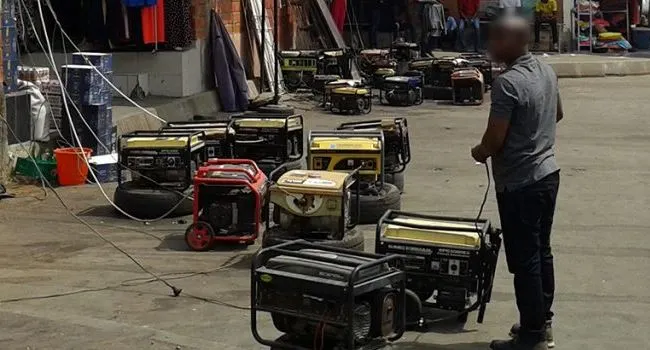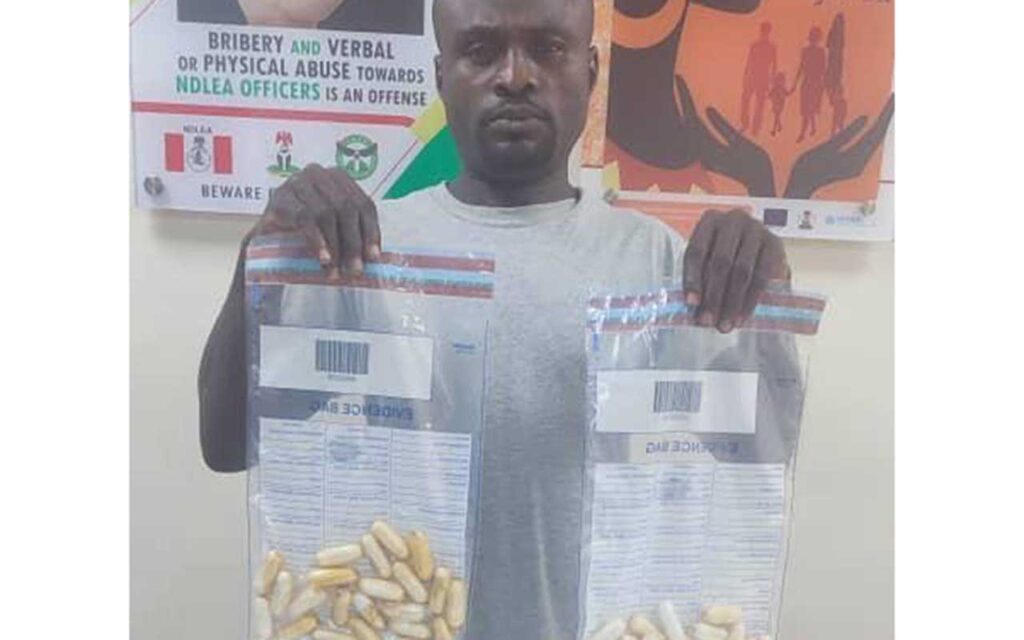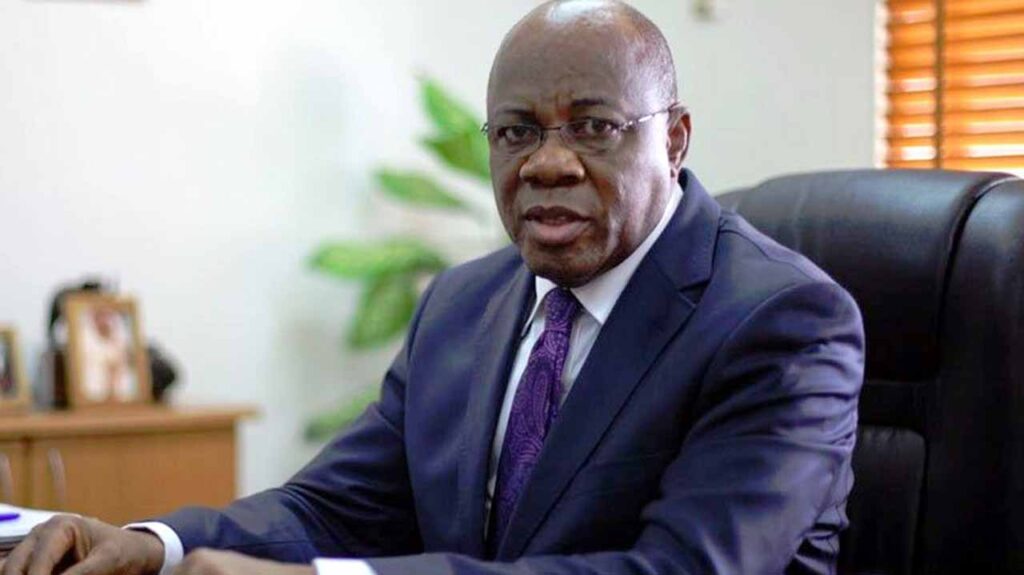 Efforts to fight crime and violence in South Africa and create a safer and predictable environment for investors and citizens alike, have been a national priority for government since it came to power in 1994 and will continue unabated. This was one of the key takeouts from President Cyril Ramaphosa in his 2024 State of the Nation address (SONA) earlier this month.
Efforts to fight crime and violence in South Africa and create a safer and predictable environment for investors and citizens alike, have been a national priority for government since it came to power in 1994 and will continue unabated. This was one of the key takeouts from President Cyril Ramaphosa in his 2024 State of the Nation address (SONA) earlier this month.
“Crime has a severe impact on the quality of life of all South Africans, particularly the poor. High levels of crime also thwart efforts to stimulate growth, increase investment and reduce poverty. Over the past year, we have continued to direct significant resources and effort to fight crime and keep communities around the country safe,” President Ramaphosa pointed out.
“Government continues to visibly increase police presence on the streets as a further deterrent to criminal activities, especially in crime hotspots. We have increased the number of police personnel, and 12 000 new police trainees have now been recruited to ensure that the South African Police Service (SAPS) urgently gets the capacity it needs.
“We have appointed new leadership in the SAPS, Hawks, NPA and State Security Agency to ensure the stability, integrity and capability of these key crime-fighting bodies. With more police on the street, with functioning community policing forums and an effective and independent prosecution authority, our people will be able to count on the protection of the state,” he said.
Organised crime
Drug trafficking syndicates, gangs and other forms of organised crime represent an urgent and growing challenge in South Africa, President Ramaphosa added.
“The SAPS is making progress in disrupting and preventing organised illegal activity. We also need to confront the criminal gangs that invade construction sites and other business places to extort money from companies.
“Government has embarked on a process of reform to improve the effectiveness of our fight against crime, corruption and sabotage. We have established specialised SAPS units to work with business, private security and SOEs to tackle illegal mining, essential infrastructure offences, environmental crimes, drugs and drug-related matters, cash-in-transit robberies and ATM bombings, illegal firearms and trafficking in persons.”
To date, 30 illegal drug laboratories have been dismantled, R324 million illegal drug seized, 1369 persons arrested for serious organised crime activities and 200 convictions secured.
In addition, to prioritise fighting crime and corruption with a focus on enhancing law enforcement agencies, a total of R765 million has been allocated to the peace and security cluster, R628 million to the Department of Justice and Constitutional Development for the implementation of FATF and State Capture recommendations, bringing the total funding to these efforts to R2,3 billion.
Government has furthermore set aside R2,3 billion from the Criminal Asset Recovery Account to combat illegal mining and other priority crimes, with 60 per cent allocated to police deployments, including vehicle procurement.
The World Bank
A World Bank study late last year credits the South African government for placing crime prevention on the front burner.
“Government has put fighting crime at the forefront of its policy priorities…Addressing crime is complex and requires long-term efforts, but past experiences in South Africa and abroad suggest that targeted, well-designed, and implemented policies can be prioritized for effective crime reduction over the short and medium term. Such policies and measures include law enforcement measures, regulatory reforms, and targeted violence prevention interventions. These are consistent with the government’s current priorities.”
The report aims to contribute to a better understanding of the impact of crime on South Africa’s economic growth and the research is intended to support the government in the design and implementation of policies to combat and mitigate the costs of crime on the economy and society. The report also highlights that sustainably reducing crime requires addressing root causes linked to socioeconomic challenges, including poverty and unemployment.
Efforts to curb crime and violence and create a safer and predictable environment for investors and South Africans alike, have indeed been top of mind for the government for the past three, resulting in a number of policies/strategies/development plans/White paper, etc. Accordingly, over time a range of pro-active measures have been implemented (see above), in the fight against crime and violence. These are set to continue.
National Crime Prevention Strategy
As far back as March 1995, Cabinet initiated the National Crime Prevention Strategy (NCPS), which was informed by an extensive process of research and analysis, and had drawn on international experiences. Both Business Against Crime and NGOs concerned with crime prevention, made substantial contributions to the strategy.
The NCPS has the following objectives:
The establishment of a comprehensive policy framework which will enable government to address crime in a coordinated and focused manner which draws on the resources of all government agencies, as well as civil society.
The promotion of a shared understanding and common vision of how we, as a nation, are going to tackle crime. This vision should also inform and stimulate initiatives at provincial and local level.
The development of a set of national programmes which serve to kick start and focus the efforts of various government departments in delivering quality service aimed at solving the problems leading to high crime levels.
The maximisation of civil society’s participation in mobilising and sustaining crime prevention initiatives.
Creation of a dedicated and integrated crime prevention capacity which can conduct ongoing research and evaluation of departmental and public campaigns as well as facilitating effective crime prevention programmes at provincial and local level.
This National Crime Prevention Strategy is based on a fundamentally new approach by government. In particular, it requires the development of wider responsibility for crime prevention and a shift in emphasis from reactive “crime control”; which deploys most resources towards responding after crimes have already been committed, towards proactive “crime prevention” aimed at preventing crime from occurring at all.
National Development Plan
The National Development Plan (NDP) of 2012 also focused strongly on the fight against crime and violence; one of 12 strategic priorities that the Government has agreed to address while in office. In an effort to achieve this, a number of policies and strategies have been put in place.
An article titled How does policy respond to violence and crime in South Africa? tracks the aims and development of anti-crime and -violence policies in detail.
An advisory board – National Planning Commission – was appointed by the President in 2010 to draft a National Development Plan (NDP). In 2011 the Commission released the Diagnostic Report, setting out South Africa’s achievements and shortcomings since 1994.
The report stated that “the main reasons for slow progress were the failure to implement policies and an absence of broad partnerships, leading to the development of the draft national plan later that year. Building on the diagnostic, the plan focused on four thematic areas: rural economy, social protection, regional and world affairs, and community safety.”
The commission consulted widely on the draft plan, which was broadly supported by South Africans. This consultation and input – including suggestions for modifications and effective implementation – was considered, informing the final NDP, which was adopted in 2012.
The objective of Charter 12 of the NDP is that “in 2030 people living in South Africa feel safe and have no fear of crime. They feel safe at home, at school and at work, and they enjoy an active community life free of fear. Women can walk freely in the street and the children can play safely outside. The police service is a well -resourced professional institution staffed by highly skilled officers who value their works, serve the community, safeguard lives and property without discrimination, protect the peaceful against violence, and respect the rights of all to equality and justice.
The proposed actions to achieve the vision of safer communities in South Africa include; strengthening the criminal justice system, creating a professional police service, demilitarising the police service, use an integrated approach to safety and build community participation in community safety.
Additionally, a strong emphasis is placed on tackling the underlying root causes of South Africa’s violence problem. Factors that contribute to high levels of violence include poverty, unemployment, inequality, a lack of social cohesion, inadequate care of children, apartheid’s spatial legacy in cities and towns, alcohol and drug abuse, and the widespread availability of weapons.
Dealing with these dimensions requires a long-term, holistic approach to building community safety, in which both state and non-state capacities and resources are mobilised. Crucially, the active participation and co-responsibility of citizens is encouraged, and governmental departments are required to align all of their strategic plans, policies and budgets towards achieving the objectives of the Policy.
Integrated approach
In 2016, the White Paper on Safety and Security was published. This policy on safety, crime and violence prevention aims at promoting an integrated and holistic approach to safety and security, providing substance and direction to achieving the NDP’s objectives of ‘Building Safer Communities’. The focus here is on the prevention of crime and violence as a necessary precondition for increasing people’s feelings of safety and building safer communities as envisioned by the NDP.
In the final analysis, “safety involves the criminal justice system, local government, the community, private sector and role-players involved in economic and social development. Achieving a safe and secure society in 2030 will require an integrated approach to make a safety and security a reality for all South Africans in 2030,” the National Planning Commission concurs.
Implementation
Ultimately, successful crime and violence prevention centres on implementation (and consistent monitoring).” Although there is clearly a comprehensive framework consisting of well thought out policy, the outcome is ultimately determined by how well these are implemented (and monitored). No matter how good the policy document is in theory, without sound implementation putting it into practice the intended outcome cannot be achieved.” How does policy respond to violence and crime in South Africa?
Tshepo Matseba is the Managing Director at Reputation 1st Group and Non-Executive Director at the Institute of People Management (IPM). He writes in his personal capacity.













